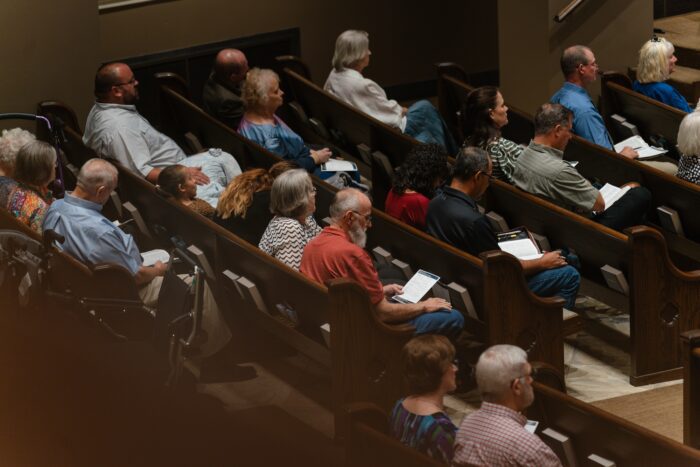If you want to preach something substantive, you have to have something valuable to say. So how do you find something of value to say from Old Testament narratives? Since many in your congregation first heard these stories as children, they may assume the narratives are primarily for kids. However, when proper exegetical tools are used, preachers can extract profound truths from Old Testament narratives that shape people’s faith in the 21st century.
How to Identify Substance
To understand what the author of an Old Testament narrative is communicating, you must read the narrative with the proper method in conducting literary analysis. Several helpful book-length aids include:
- Robert Alter’s The Art of Biblical Narrative
- J.L. Ska’s What Our Fathers Have Told Us
- Shimon Bar-Efrat’s Narrative Art in the Bible
- J.P. Fokkelman’s Reading Biblical Narrative: An Introductory Guide.
These resources equip preachers to:
- Conduct plot analysis to uncover the story’s structure and progression.
- Pay attention to the speed of narrative time.
- Understand characters through their names, actions, and dialogue.
- Recognize inner-biblical connections that link one text to others in the canon.
- Identify where a story fits within the larger narrative of a book or the Bible as a whole.
These tools aid the final product of a sermon because each sermon starts with identifying the substance, or meaning, of the text at hand. These tools are important because Old Testament Narratives are fundamentally different than other genres. Rather than using systematic argumentation (as seen in the Epistles), Old Testament narratives communicate theological messages through the skillful presentation of plot.1 These narratives utilize plot as the primary medium for conveying theological truths about God’s actions and interactions with human characters.2
Avoiding Historical Distractions
Some preachers, rightly committed to biblical inerrancy, focus heavily on historical details. It can be tempting to recount all the historical details and archaeological evidence related to the events. While historicity is important, it is not the primary (substantive) point of the narrative.3 These stories aim to communicate theological messages that transcend their historical settings.
Test Case: David and Goliath
The David and Goliath story in 1 Samuel 17 is familiar to almost everyone. Often thought of as an underdog tale, it is frequently invoked to describe unlikely victories in sports or other arenas. However, a close reading reveals that the author’s intent goes beyond simply telling a story of an unexpected outcome.
This story is part of a larger section in 1 Samuel contrasting David and Saul. David is described as a man after God’s own heart (1 Samuel 16), while Saul is depicted as someone who clings to power (1 Samuel 15). In 1 Samuel 17, the narrator highlights David’s focus on God rather than the challenge in front of him (1 Samuel 17:26, 37). Perhaps David’s actions reflect his awareness of Deuteronomy 20:4: “For the Lord your God is he who goes with you to fight for you against your enemies, to give you the victory.”
Both David and Saul face the same opportunity to deliver Israel from the Philistines. Saul seeks to delegate the task by offering rewards for someone else to fight Goliath. In contrast, David, fully trusting in the Lord of Hosts, acts decisively to deliver God’s people. His focus on God’s promises makes him the kind of person God chooses to use, in terms of faithful leadership.
It is also important to remember not to get sidetracked by textual variants about the height of Goliath or the archeological evidence that shows differences between an Israelite bronze sword and Goliath’s equipment. While interesting to seminary students and professors—and valuable for discussions about the historical accuracy of the Bible—such details may not communicate the real point of the story to your audience. These historical nuggets should be used only insofar as they strengthen the presentation of the Big Idea of the story.
The Big Idea of the David and Goliath Narrative
Steven Mathewson suggests: “The subject of 1 Samuel 17 is why God chose to use David instead of Saul. The complement is: because David had the courage to act in faith on God’s specific promise. The full exegetical expression of the big idea is: God chose to use David instead of Saul because David had the courage to act in faith on God’s specific promise.”4
Mathewson further advises preachers to generalize the idea slightly to make it applicable for a modern audience: “The kind of person God uses.”5 This abstraction helps connect the narrative’s theological message to the lives of 21st-century congregations.
Conclusion
Preaching the substance of Old Testament narratives requires both reverence for the text and the proper tools to uncover its depth. These stories are not as simple as they seem. Rather, they are rich with theological insights and timeless truths that have the power to transform lives. By engaging in careful exegesis and paying attention to the narrative’s plot, characters, and theological messages, preachers can draw out truths that resonate with today’s congregation.
The narrative of David and Goliath, for example, is not merely an inspiring tale of an underdog but a profound theological statement about the kind of person God uses—a person who acts in faith and trusts in God’s promises. When preachers move beyond surface-level readings or moralistic applications, they can show how these ancient stories speak powerfully to the challenges of modern faith.
As you prepare your sermons, remember that these narratives are not just historical records or moral fables. They are windows into God’s character and His redemptive work. Focusing on their substance helps your congregation see God’s work in the text and their own lives. By doing this you can elevate their view of Scripture’s narratives and equip them to live out their faith.
- Preaching OT Narrative, 31 (Chapter 2) ↩︎
- Preaching OT Narrative, 36. ↩︎
- “To preach the message of a narrative passage is to take it in its entirety, not to dwell just on character/behavior traits of individuals in the narrative.” Expositional Preaching of OT Narrative, 57. ↩︎
- Matthewson, 89. ↩︎
- Matthewson, 89. ↩︎








